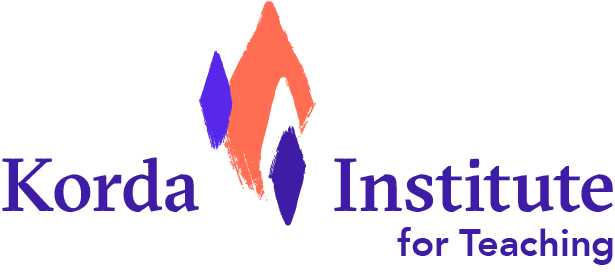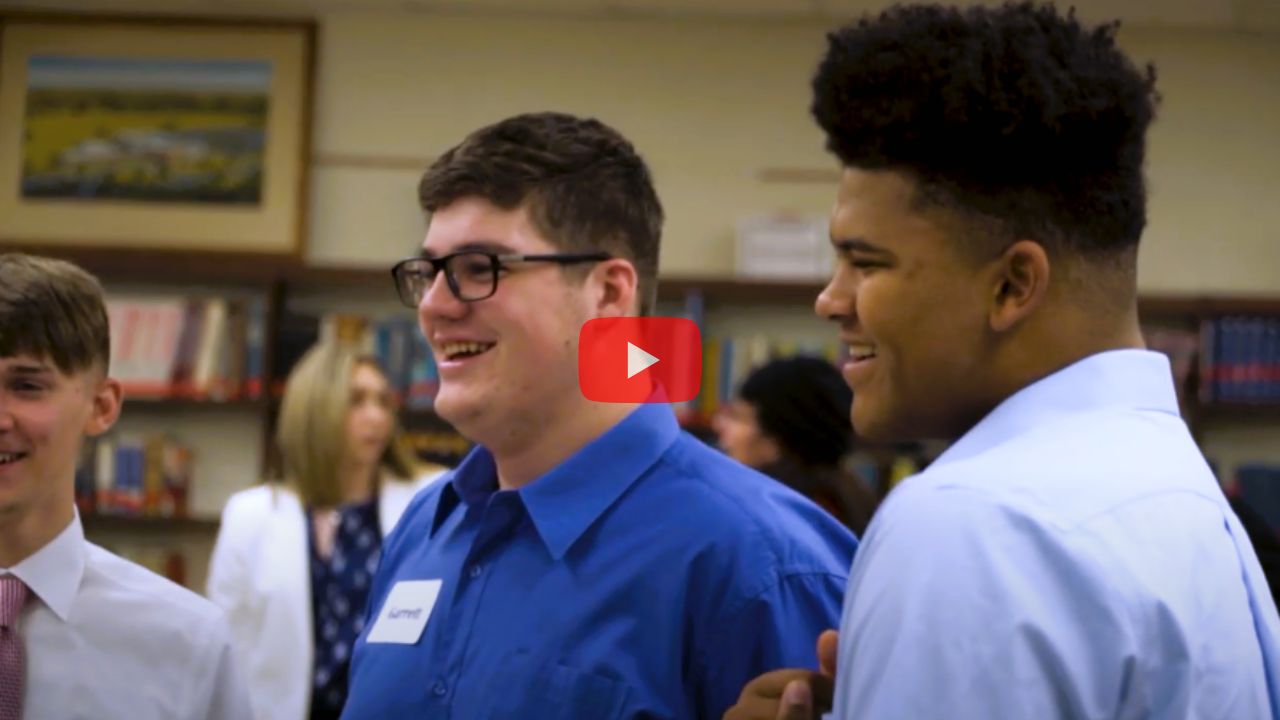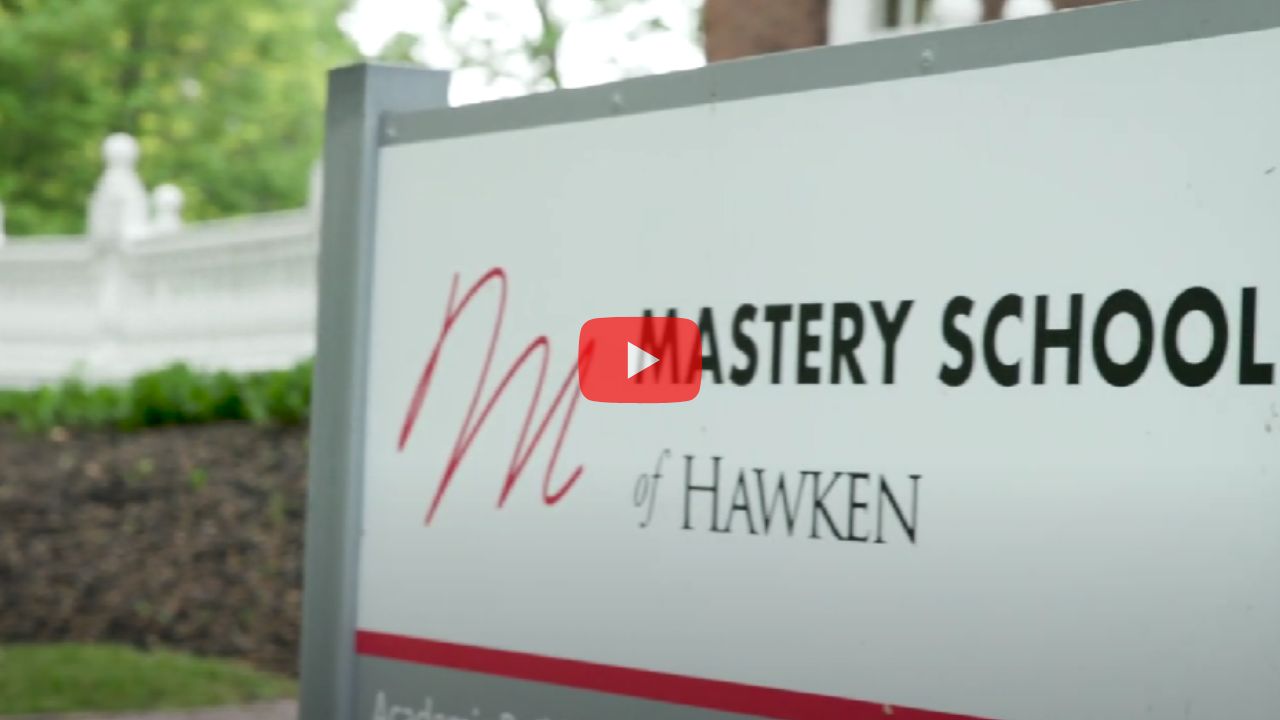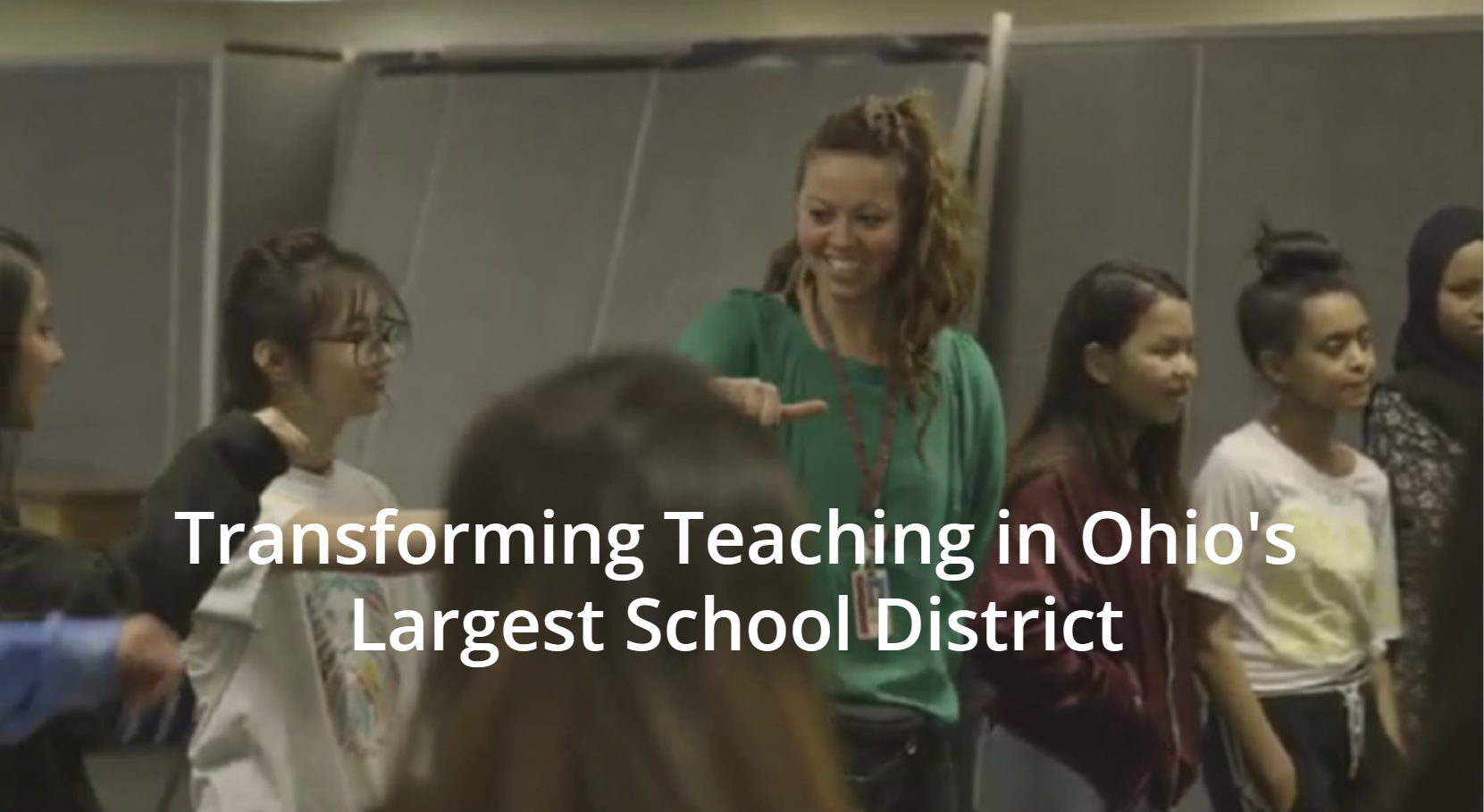In this episode we’ll talk about these final projects where students create their own businesses and will face huge academic challenges in the process.
Alison: Final projects.
Doris: Yeah.
Alison: We’re off and running already today.
Doris: We sure are. So this is really interesting. So they did their presentations on Tuesday for their last business challenge and now, starting today, they came in with problems they wanted to solve, pitch them to each other, vote. Top vote-getters form teams and they’re going to create businesses to solve the problems they’ve chosen and they’ve got five weeks to do it and then at the end they’ll present to investors. This part of the class feels, looks I should say, to most people the most recognizable. This is…
Alison: In terms of an entrepreneurship class?
Doris: Exactly. When people, for example, think of a Lean LaunchPad class, like they do in university, Steve Blank’s curriculum, like they do in graduate schools, NSF, this is the most full-on Lean LaunchPad part of the class, but it’s for high school and it’s quite different in a number of ways from what you’ll see elsewhere. And I want to start, you know, as you look a level deeper at what this is.
If you took a bunch of high school kids and you gave them a class, if this were the class, if the entrepreneurship class started today, they pick problems they want to solve, they form teams, you lead them through a process to design a business, everything is completely new, but also generated from wherever that teenager is, coming out of their high school class and into an entrepreneurship course. It’s entirely different what they choose to work on, how they work on it, the level they get to, and as a result the kind of learning of skills that we can build into this because before today they learned so much by working on the business challenges of others earlier in the class. All that foundational stuff that we’ve had them go through means that when they start this they are at a very sophisticated place as compared to where they would be or where they were the first day of class. I don’t know if that makes sense, the way I said that.
Alison: No, it’s a really great point you’re making and it’s something I recognized even before I joined the team here, when I had first come to see the work you were doing and stopped in for some presentations the semester before to watch those final presentations and recognize the level of depth they went to was far more sophisticated than a lot of work I had seen at the graduate and undergraduate level.
Doris: And investors tell us when they’re having, not even in school, when they’re having entrepreneurs pitch startup ideas for investment. Semester after semester these investors, and they’re really credible people, successful people, say, “Woah, those were better than what I see…”
Alison: Out in the actual community, yeah.
Doris: Right. And it’s not magic.
Alison: It’s not that these students are particularly, you know…
Doris: Right. What happens is…the secret sauce, if you want to look at sort of what the projects are that we have them do in the class, from that perspective the secret sauce is the learning they do in the first part of the class when they work on one after another after another real startup problems from real businesses and they have to learn a heck of a lot during those.
Alison: And it is. I think the way that you have structured this module, that sequencing of learning, I know you call it the learning terrain, is very thoughtfully designed ahead of the course, where in Biz 1 we recognize the specific challenge they’re going to be working on, what industry the entrepreneur is in, what stage of operation they’re at, who the entrepreneur is and their background experience, their motivations, which look dramatically different than Biz 2. And they dive into that and have to go to a deeper level which has a lot more complexity, generally is how we structure that. Into Biz 3 if there’s time in a semester for a third Biz, then you can go even deeper and more broad.
It’s really impressive to watch you in that space designing that learning terrain, because it is the foundation for the depth of their learning but as well for all those methodologies you talk about, whether it’s customer development, design thinking, the creative problem solving problem, where they come into this, and although I’m sure we’ll see them still lean toward solutions early on, they recognize the importance of having to validate and go out there and understand a problem before they can even begin to solve it.
Doris: Well, exactly. And even the language that we were using today, let alone the concept, here it is, day one, they’ve barely started, they’ve pitched problems to each other, and by the way those problems they pitch still are at a teenager level.
Alison: Absolutely.
Doris: Okay. So they came in with pitching things that weren’t so interesting actually, if you want to know the truth, but what we know with confidence is it doesn’t really matter what they pitched. Because it’s really the learning that’s going to happen and as they go get into it, if the problem they pitched actually isn’t that big a problem or it has already been…
Alison: Solved at some point.
Doris: …very beautifully solved is they are going to very, very quickly, by doing real research and asking the right questions, they’re going to get there very quickly and…
Alison: And have to pivot.
Doris: …and they’ll have to pivot. So they already understand today, at the very beginning of this, the importance of validating the problem and what that looks like and what that means, why that matters most first, why if you let your inclination to want to come up with the solution drive you you’re going to never end up with a successful solution. We can talk about even the way, in literally probably two minutes I talked about where does design thinking come in and human-based design and the whole discussion of the combination of desirability, viability, and feasibility and what those are and how they interact with each other. And I didn’t have to tell them. I put the thing up there, desirability, feasibility, viability, endless loop, validating these three, iterating as you have why does this matter. They got it. They answered it.
Alison: Because they’ve had some exposure to that through their Peaceful Fruits journey for their Biz 1 and then into Endemic Solutions they had to think through that. And it wasn’t explicit. It wasn’t like we sat them down and said, “Okay. Today we’re going to talk about the desirability of Peaceful Fruits.” or, “Okay, today we’re talking about the feasibility of endemic solutions.” It’s very real. It’s messy. It’s not linear, but it’s applied. Everything continues to be applied in real startup settings where they can now have internalized it to a place where they can just use it for what they’re doing now.
Doris: Exactly. Think about what it means when, I’m just thinking about the many, many different things that came up today that where literally what I did is ask them and they got it, they answered it. Think about what it means that you’re standing with a high school group and you say, “By the way, in a week you’re going to be sharing out and you’d better have your value hypothesis and that means you’d better have defined a target market with a problem or need and here’s how that looks, here are the variables. How do you validate?” And instantly…and I say, “Is there a place for surveying? Is there a place for interviewing?” And instantly I think it was Hannah says, “Well, yeah, they’re different. It depends on what you’re trying to validate and what you’re trying to find out. It’s the difference between qualitative and quantitative research.” And literally not only uses those terms, but others chime in about when you might interview versus when you might survey, when you go online and go deep and when you don’t.
And when we throw out there, “In a week you’re going to be sharing out and there are going to be seven of us in the room. Not just the instructors you’re used to, but we’ve got mentors for you on this one. They’re all very experienced. They’re all very opinionated. You’re about to get seven adults. When you share out, here’s what we’ve got so far and here’s where we’re going. You’re going to have seven adults telling you, ‘No, no, no,’ or, ‘Yes, yes, yes,’ and it’s all going to be conflicting all over the place. And what are you going to do with that?” And they said, “We’re going to have to process. We’re going to have to figure it out on our own.” And I said, “That’s right. Because no matter how experienced and smart and opinionated we adults are, if you could Google what’s the right answer to solving this business you wouldn’t need any of us. And you can’t. It’s your business.”
Alison: Right, because they’re doing the research.
Doris: And the big message with all of this is that by now they have really connected with what it means to design process well, what it means to be generative as a team. Even the way they started, each team when they formed, how they decided that, and then when they started how they dove in, it’s very interesting how much they’ve learned about needing a diverse team with different skills and how you tap those and how they right away organize themselves to do the hard work.
Walking in the door to this course for the first three, four weeks, they were shell-shocked. “You’re not telling us what to do next. I don’t know what to do next unless you tell me.” Now they get that the hardest, the most challenging, the most interesting part of this is designing the process. They are going to design the process. They are going to decide what to do next and that’s really interesting.
Alison: I was pretty impressed with the one team that immediately jumped in. I mean they were so fired up over the problem itself, it really resonated with that specific team, which the problem was around concussions and creating some kind of headband to address that.
Doris: Headband. Yeah. Uh-oh, we just gave away the…somebody’s going to steal that idea. We’d better be careful here.
Alison: But that team immediately jumped in and started delegating work in a way that, you know, at the beginning of the class like you’re saying, they would have never known where to begin. And if you think about, as you were mentioning earlier, a number of other classrooms that start with this model at the beginning of their course, the work itself is so foreign that the students have to rely a rely a lot on the instructor to explain all of the elements of the business, you know, a little on the business model canvas and thinking through, “Okay, what are we talking about when we’re looking at channels, what does that mean when we’re looking at the customer segment and therefore the value prop?” And it’s just a totally different way that they move through the learning that I really appreciate watching in this moment right now.
Doris: Well, it’s really exciting. In the next five weeks they are, every one of them, going to learn a crazy amount. They’re also, every individual student is going to gain deep, deep knowledge about certain things. I can’t tell you now what those things will be. I can tell you that some of them are going to come out of it learning a lot more about statistics than they can even imagine. They’re going to learn about modeling. They’re going to learn about a whole bunch of things. They’re going to become much more sophisticated when it comes to knowing how to use data well to drive decisions. But some of them are going to learn about fields and about science and about…literally I can’t even predict what they’re gonna…but…
Alison: Especially because I think we’re anticipating a couple of pivots. There’s no way we can predict it.
Doris: Well, sure. Sure. Absolutely. But they’re going to learn a crazy amount and they’re also going to in the next five weeks, they’re going to hone these new skills that they’ve developed to a really, really great degree. That the whole how you problem-solve when it’s really complicated, and it’s wide open. You can go about it who knows how. How they conduct as a team research, instead of just sort of researching endlessly like they did on their first one and then raising their hand and saying, “Okay, we don’t know what to do with what we found.” Look at how they started today. Every single team immediately came up with, “I think here are the questions that we have and let’s divvy up the research over the weekend.” The way they mobilized from day one is what you would see in a pretty high functioning organization when you go in and you go to a team that’s been solving some of the tough problems for that business or organization, whatever it is, these guys are…they’re ready to do a good job with us.
Alison: What I love so much about, again, how you designed this in a sequential manner is that they get practice at this process over and over. The fact that they can come into this and now feel confident, now recognize, “Oh, I do have a sense of what to do to move through this messy process. I know how to take on a lot of ambiguity, how to use the team I have in front of me and leverage each other’s strengths and skills so that we can make some progress. I don’t know where we’re going to go.” But the fact that they can enter this stage with a bit more confidence is only because they went through a couple failures if we can say, where they had to recognize that learning along the way because it wasn’t obvious up front.
Doris: Right. The first ones are really tough, but they build and there we pretty much contain the problem. It’s a real one of some other business that’s existing. There’s a ton to do and a ton of learning, but it’s not this wide open pick whatever you want. They really have to learn about water filtration and water purification and they have to learn about developing countries and their contaminated water-related issues versus those in the developed world. They don’t get to go wherever they want to go and they have to learn it and some go deeper than others and they know it. But what you just said, here’s what’s so important about that. So they, when they get to a place in this class where they’ve done enough of that, that, as you said, they have this confidence now, “Okay, I can do this. I have a lot to bring to the table and whatever I throw at myself, I know I can do something really great.”
They are doing it on businesses and problems of their own choosing which is wildly exciting to them, but they don’t get to do that until they’ve learned a lot. And starting with that now means that this confidence that you’re talking about, as they go crazy over the next five weeks developing their business models, when I use the word “empowerment” that really honestly is what this kind of learning, that’s what it’s all about. It’s about empowerment. Because they’re already feeling it and over the next five weeks they’re going to really experience their ability to learn, their individual ability to contribute, to contribute uniquely, to go deep into things they care about, to learns things because they want to and need to and not because of some test. And they also experienced already, and they’re big time going to experience as they move ahead, that no jargon in any industry, science, anything will…what’s the word for it? They don’t’ get intimidated now. They know that, “I can figure it out. I’ve done that already.”
Alison: I think it is at the crux of what I believe about experiential learning and I know that’s a term that’s thrown around a lot, but the truth of it is we learn through experience, we learn by doing. The fact that these students time and time again now have experienced this process, experienced what it feels like to be out of their depth, to not go as deep as they should have, to maybe not use their team in the best way, and then to couple it with the level of reflection that I know is so core to your methodologies. That that really reinforces their overall understanding of how to move through this and because of those experiences. I do, I think experiential learning is what empowers people, whether it’s a student or an adult. I mean a lot of the work I had done in the past before joining the team here, I saw that to be the case as well.
When any person can identify a problem and feel confident moving through the process with the tools they need and the experiences and their background to help them create a solution that can impact some people around them, that’s super powerful.
Doris: It is. The reason that I personally am doing this inside a school and have been 21 years starting with high school math and etc., is because this is the most powerful learning, but for us to really change school so that it serves kids so that they are prepared for the world they’re going out into, this has to be done in a completely different way and experiential learning, what I get worried about, and we’re guilty of it, we use edgy jargon all the time, we use these terms, people define these things differently. What’s happening here is that this is a really very structured curriculum and approach and whether it’s an entrepreneurship class or a science class or whatever it is, there are methods and instructional practices and principles of teaching and rigor I’ll call it that are massively important as part of this. And…
Alison: I hear what you’re saying, what you’re getting at, is that it’s baked into the course overall that these experiences they’re going through, I mean this is why I resent people who use the word “experiential learning” and aren’t doing things that are based on real, well, I guess that’s arguable, I guess real experiences. If you’re just going on some trip where you’re, you know, out in the wilderness or you’re down in another country, yeah, that’s an experience to some level, but if there isn’t the level of structure around what’s happening, where you’re reflecting, you’re applying what you’re learning, you’re moving through that time after time, I mean that’s ultimately what these experiences drive forward to.
Doris: Well, yeah. I guess the way I think about it is we can talk about the fact that people learn by doing and it’s absolutely true. And we can talk about experiential learning and there’s absolutely…there’s no question that there are all kinds of experiences as humans that we have that we learn a tremendous amount from. I’ve learned more from some of my travel experiences that were not part of a class or a curriculum or anything, and I’ve learned from anything else in my life. There’s no question about it. Our experiences…whatever those are. But when you’re talking about school, how are we doing school?
What we have here is not to be confused with a fun startup weekend or a throw a project, even a real one, in the room, let the students work on it for a couple of weeks, come back, have them present, and wasn’t that cool? Not that they don’t learn from all of those things. They do, but this is literally about creating a completely different model of how you teach a course, an academic course, so that learning happens inside a school. And so this last part, what’s interesting about the last part of this class is they get to choose, that’s unusual, but they get to choose what they’re working on, but actually the expectations and the requirements are more defined for this than anything they’ve done so far. It’s true.
Alison: It will be interesting. I’m excited about these next few weeks coming up. There’s a lot that they’re going to learn and we’ll see.
Doris: We’ll see. Yeah. It’s really cool.







